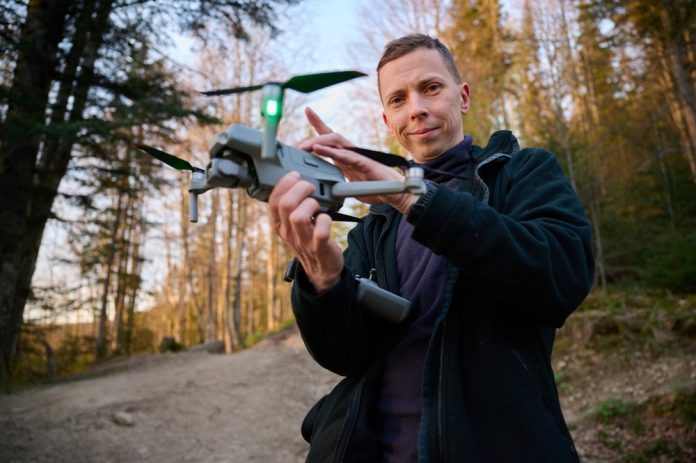
Russia vows retaliation for Ukrainian “Spider’s Web” drone attack that devastated their military air power, despite claiming the bomber aircraft were merely “damaged” and not “destroyed” as satellite images reveal extensive wreckage.
Key Takeaways
- Russia downplays damage from Ukraine’s “Operation Spider’s Web,” claiming warplanes can be repaired despite satellite images showing extensive destruction
- Ukraine reports destroying or damaging up to 40 Russian bomber jets and surveillance aircraft in a coordinated drone offensive
- President Trump discussed the attack with Putin, who indicated Russia will respond forcefully to the Ukrainian operation
- U.S. officials estimate around 20 Russian warplanes were hit, with approximately 10 completely destroyed
- The sophisticated Ukrainian operation was planned for over 18 months and included attacks on both airbases and the Crimean bridge
Russia Downplays Devastating Ukrainian Drone Strikes
Russia is scrambling to repair its military aircraft fleet after Ukraine’s massive drone offensive left many of their strategic bombers damaged or destroyed. Despite overwhelming evidence of significant destruction, Russian officials are attempting to minimize the impact of the attacks. Deputy Foreign Minister Sergey Ryabkov insisted that the aircraft targeted by Ukrainian drones during “Operation Spider’s Web” would be returned to service, contradicting satellite imagery and video evidence showing planes engulfed in flames following the precision strikes.
“As the defense ministry said, these aircraft were not destroyed but damaged. They will be repaired,” said Sergey Ryabkov, Russian Deputy Foreign Minister at Fox News.
Ukrainian military sources claim their coordinated drone attacks disabled or destroyed up to 40 Russian bomber and surveillance aircraft – a significant blow to Russia’s air capabilities. U.S. intelligence assessments, while more conservative, still confirm substantial damage, estimating approximately 20 aircraft were hit with at least 10 completely destroyed. The strikes targeted multiple Russian airbases simultaneously, showing Ukraine’s growing ability to project force deep into Russian territory despite facing ammunition shortages and continued Russian bombardment of Ukrainian cities.
Inside Operation Spider’s Web
Ukrainian President Volodymyr Zelenskyy personally oversaw the complex operation, which had been meticulously planned for over 18 months. The coordinated drone strikes penetrated deep into Russian territory, targeting strategic military assets at multiple locations. Satellite imagery confirms extensive damage at Russian airbases, contradicting Moscow’s claims of minimal impact. Ukrainian forces released video footage showing aircraft bursting into fireballs after precision drone strikes, providing compelling evidence of the operation’s effectiveness in crippling Russia’s bomber fleet.
The operation’s name, “Spider’s Web,” reflects its multi-pronged approach, with simultaneous attacks on multiple targets across Russian territory. Beyond the airbase strikes, Ukrainian forces also conducted an underwater blast targeting the crucial bridge connecting Russia to Crimea, further disrupting Russian military logistics. The sophistication of the operation demonstrates Ukraine’s growing capabilities in asymmetric warfare, using relatively inexpensive drone technology to inflict severe damage on Russia’s more expensive conventional military assets.
Trump-Putin Discussions and Russian Retaliation
President Donald Trump discussed the Ukrainian drone offensive with President Vladimir Putin in a recent conversation, though the attack was conducted without prior notification to the Trump administration. Putin reportedly expressed his intention to retaliate against Ukraine for the strikes, signaling a potential escalation in the conflict. The conversation between the two leaders did not produce immediate progress toward peace, according to President Trump’s account of their discussion.
“We discussed the attack on Russia’s docked airplanes, by Ukraine, and also various other attacks that have been taking place by both sides. It was a good conversation, but not a conversation that will lead to immediate peace. President Putin did say, and very strongly, that he will have to respond to the recent attack on the airfields,” said Donald Trump, President of the United States Fox News.
“Signs of Russian retaliation have already emerged,” said President Zelenskyy, reporting a “savage strike” on the Ukrainian city of Sumy following the drone operation. The Ukrainian leader’s decision to approve such a significant offensive operation demonstrates his administration’s strategic approach to the conflict, aiming to degrade Russia’s military capabilities and potentially strengthen Ukraine’s position in any future negotiations. However, the prospect of intensified Russian counterattacks raises concerns about further civilian casualties and infrastructure damage in Ukraine.
Strategic Implications for the Ongoing Conflict
Operation Spider’s Web represents one of Ukraine’s most ambitious and successful military operations since the conflict began. By targeting Russia’s strategic bomber fleet, Ukraine has potentially limited Russia’s ability to conduct long-range strikes against Ukrainian infrastructure and civilian targets. The precision and coordination demonstrated in the operation also sends a powerful message about Ukraine’s growing military capabilities despite facing significant resource constraints compared to Russia’s larger military industrial complex.
As Russia attempts to repair its damaged aircraft and plans its response, the operation has shifted the momentum in the conflict, at least temporarily. The Trump administration now faces complex diplomatic challenges in managing relations with both Russia and Ukraine while pursuing peace in the region. For American taxpayers who have funded billions in military aid to Ukraine, the operation demonstrates Ukraine’s ability to use Western-provided intelligence and technology effectively against Russian military assets, though questions remain about the long-term strategic impact on the conflict’s resolution.





